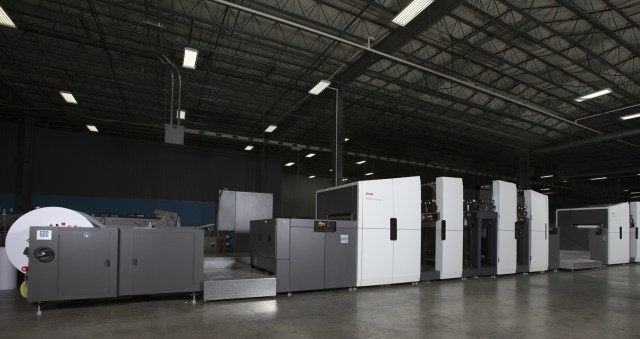
Inkjet printing is the overnight sensation that took almost 40 years. Inkjet printing is a form of digital printing. Digital printing involves any reproduction process that does not use a static image carrier (such as a plate). Every page impression is regenerated, even if they are the same. Digital printing can use any method that places spots of coloured particles on substrates, with toner and inkjet being most common.
Inkjet technology is either thermal (heat makes a bubble), piezo (pressure makes a bubble), or continuous (pressure makes a flow). Inkjet printing can be sheetfed, rollfed, flatbed, or combinations. They can use inks that are aqueous (water-based), solvent (petro-chemical-based), eco-solvent, and UV using either dyes or pigments.
All digital printing systems are perfect for short runs and the only way to do variable and versioned jobs. The Holy Grail has been to apply digital printing as a plateless printing process for offset litho and flexo printing.
Considering that toner-based digital printing dominates, why is inkjet generating interest?
• Less complexity. Almost everything about inkjet is in the heads. There are less electronics, heating units, and drums/belts to deal with.
• Potential for spot colours. The single impediment to toner printing is its inability to print all the Pantone (and now Goe) colours.
• Like toner, there is no makeready so there is instant changeover of jobs with no waste.
• Inkjet is scalable from the desktop to the plant floor. Thus, proofers could use exactly the same technology to allow for proofing in customer offices.
• Larger toner-based systems have high power requirements with equally larger power units and severe environmental requirements. Inkjet requires much less of all that.
• Inkjet ink is usually less costly than toner, but new toner manufacturing techniques my narrow that gap.
There are still issues with substrate availability, nozzle clogging and head width. A lot will depend on ink formulations in terms of substrates and quality. Heads must be self-recovering to avoid clogs and missed spots.
New applications will include the so-called transpromo market for bills and statements that incorporate ads. Then, retail promotions that incorporate coupons. UV flatbed printers can print on thick board, plastic, metal and glass in addition to vinyl and fabric, and this opens many new industrial printing markets.
Toner and inkjet printing are competing with offset litho and print buyers should investigate all processes for the applicability to specific projects. For both, there is no image carrier, no makeready, instant drying and integrated finishing. Today, quality and production speed are coming into alignment with industry needs.
The professional inkjet market consists of photo labs, service bureaus, sign shops and quick printers, and represents a fast growing segment of the graphic arts industry. From its birth as an extension of the pen plotter business, wide-format product development has exploded.
In the early 1990s, Encad was the first to show the concept of wide-format inkjet printing, with technology consisting of four thermal HP print heads using dye-based inks. Other companies followed, and wide-format graphics soon emerged as the next step in the evolution of inkjet printing. These printers started rather small at 36 inches, but quickly expanded in size as the needs of the users grew.
Comment below to have your say on this story.
If you have a news story or tip-off, get in touch at editorial@sprinter.com.au.
Sign up to the Sprinter newsletter


